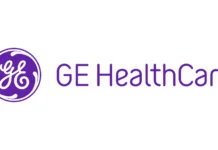As people age, health becomes increasingly precious. Regular check-ups aren’t just recommended; they’re essential. Routine physical exams are a cornerstone of preventive healthcare, particularly for older adults.
These exams can detect potential health issues early, enabling timely intervention and improved quality of life. This blog post will discuss the significance of routine physical exams for older adults and why they should be prioritized.
1. Early Detection of Health Issues
Routine physical exams are a cornerstone for detecting health issues early, often before symptoms become apparent. Conditions like hypertension, diabetes, and osteoporosis may develop silently, causing no immediate discomfort but posing serious long-term risks. Healthcare providers specializing in senior primary care use these exams to perform screenings tailored to the needs of older adults.
Blood tests, imaging, and physical evaluations can uncover early warning signs, enabling timely intervention. Early detection allows for more effective treatment and minimizes complications, improving outcomes and potentially extending lifespan.
2. Chronic Disease Management
Chronic conditions such as arthritis, heart disease, and chronic obstructive pulmonary disease (COPD) are common among older adults and managing them requires consistent oversight. Routine exams allow healthcare providers to assess the progression of these conditions and make necessary adjustments to medications, therapies, or lifestyle recommendations.
Regular visits also help monitor the effectiveness of treatments, ensuring that patients maintain the best possible control over their chronic conditions and enjoy daily activities with minimal disruption.
3. Preventive Care and Vaccinations
Preventive care is vital for older adults because it reduces the risk of developing illnesses that could significantly impact their health. A routine physical exam ensures patients stay updated on essential vaccinations, such as the flu shot, pneumonia vaccine, and shingles vaccine.
These vaccines are essential as aging weakens the immune system, leaving individuals more vulnerable to infections. Preventive screenings, such as colonoscopies, mammograms, and bone density tests, are also scheduled during these check-ups.
4. Mental and Cognitive Health Assessment
Mental and cognitive health are critical aspects of aging that are often overlooked. During routine exams, healthcare providers assess for signs of depression, anxiety, and other mental health issues that may develop with age due to physical limitations, social isolation, or major life changes. Cognitive health is also evaluated, with screenings for conditions like mild cognitive impairment, dementia, or Alzheimer’s disease.
Identifying these issues early allows for interventions such as therapy, medication, or lifestyle adjustments to slow progression and enhance the patient’s quality of life. Furthermore, addressing mental health concerns can improve overall well-being, as emotional health is deeply interconnected with physical health.
5. Monitoring Nutritional Health
Aging can change appetite, digestion, and nutritional needs, making monitoring dietary health a key component of routine exams. Older adults are more prone to vitamin deficiencies like B12, D, and calcium and protein and fiber imbalances. Routine check-ups allow healthcare providers to identify these deficiencies through dietary assessments and blood work.
Physicians can recommend specific dietary changes, supplements, or meal plans to address any issues. In cases where weight loss or malnutrition is detected, further evaluations can determine if underlying medical conditions contribute to the problem, ensuring a holistic approach to care.
6. Encouraging an Active Lifestyle and Fall Prevention
Physical activity is essential for maintaining mobility, strength, and overall health in older adults. During routine exams, healthcare providers often discuss the importance of staying active and recommend exercises that promote balance, flexibility, and strength. They might suggest activities like walking, yoga, or swimming that are safe and appropriate for an individual’s fitness level.
Additionally, these exams often include fall risk assessments, which evaluate factors such as balance, gait, and home safety. Physicians can guide fall prevention strategies, including installing grab bars, improving lighting, or using mobility aids to help patients avoid injuries and maintain their independence.
7. Strengthening the Patient-Doctor Relationship
Frequent visits to the doctor help establish a strong and trusting relationship between the patient and their healthcare provider. This rapport is particularly important for older adults who hesitate to discuss sensitive topics or new symptoms.
A long-term relationship allows the doctor to understand better the patient’s family medical history, preferences, and lifestyle, making it easier to provide personalized care. Open communication fostered during these visits encourages patients to bring up concerns early, ensuring that health issues are addressed promptly and effectively.
8. Planning for Future Healthcare Needs
Planning for future healthcare needs is becoming increasingly important. Routine physical exams provide an opportunity to discuss long-term care planning, including advanced directives, living wills, and preferences for palliative care.
While often challenging, these conversations are crucial in ensuring that an individual’s wishes are respected if they become unable to make decisions for themselves. Physicians can also help families navigate complex healthcare decisions and connect them with resources for elder care, palliative care, or hospice services, giving everyone involved greater peace of mind.
9. Building a Holistic Health Record
Another critical but often overlooked benefit of an annual physical exam is developing a comprehensive and holistic health record. Over time, these records provide invaluable insights into an older adult’s health trends, including changes in weight, blood pressure, cholesterol, blood sugar levels, and other vital indicators.
A well-documented health history enables healthcare providers to make more accurate diagnoses and tailored treatment plans. This is particularly beneficial when transitioning between healthcare providers or specialists, as it ensures continuity of care and avoids redundant or conflicting treatments.

Conclusion
Routine physical exams serve as a proactive approach to maintaining the health and independence of older adults. From detecting health issues early to managing chronic diseases, these check-ups offer comprehensive care tailored to the unique needs of aging individuals. By prioritizing routine visits, older adults can enhance their overall well-being, prevent serious complications, and enjoy a higher quality of life in their golden years.


















